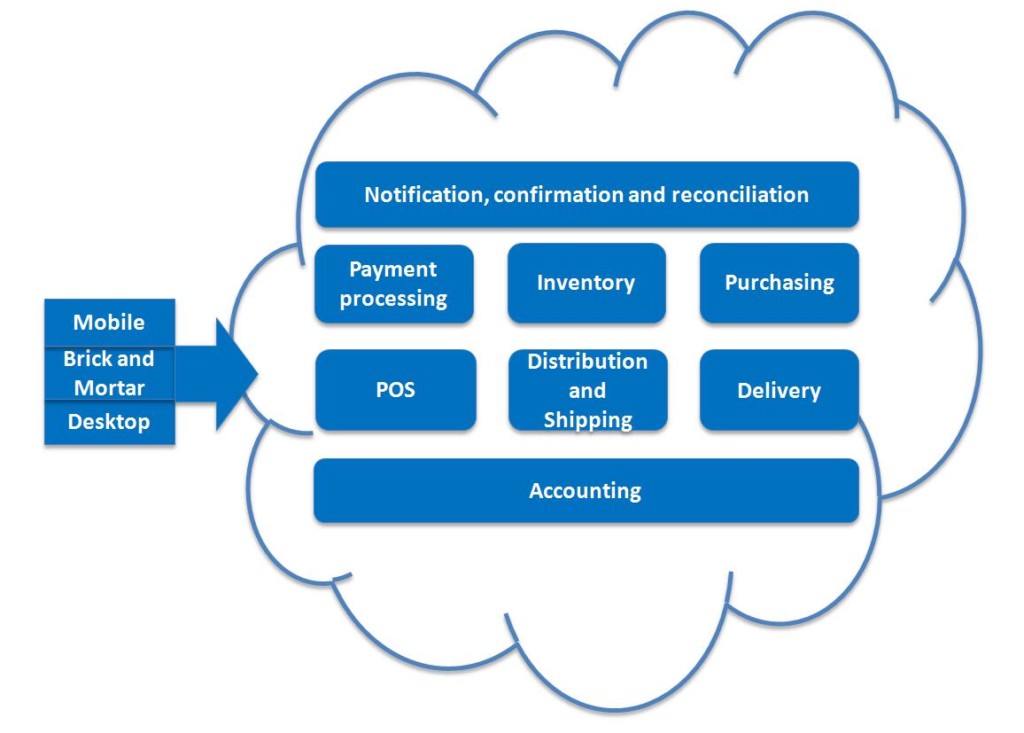As the retail industry changes and adopts new technologies, retail integration testing becomes critical to success. Adaptability to a changing environment is the key to survival, so said my father. Years and years ago, Sears & Roebuck kick started retail with their mail catalog. Allowing customers to browse through products in the comfort of their own home. Later, brick and mortar replaced catalog as people preferred to see and touch a product prior to purchase. More recently, brick and mortar has come under siege from the online retailers, who again, allow customers to compare and select products from anywhere at anytime. What is dramatically different about today, is these online retailers are not really retailers, they are software companies, focused on retail. Software, and associated peripheral technologies (cloud and mobile), is now the backbone of today’s retail business model.
Customer Experience Integration
The newest trend in retail is to integrate brick and mortar with online, to create something “experiential”. Microsoft, Apple, Amazon and others are all buying up retail locations to complement and extend the customer experience. Starbucks, for instance, is maximizing output of their factory (store location) by enabling customers to pre-order online, via mobile, and then pick up in store, bypassing the ordering and cashier lines. Apple has a similar brick and mortar strategy, letting customers touch and feel product in the store, perfectly understanding that they may buy online later, but then coming back to the store for product pick up and set up.
Amazon will do the same with Whole Foods, but with an added concept of leveraging (even further) their delivery services, which they are already pros at, and the stores serving as part of their delivery distribution network. As a complement and to increase throughput, they will have dedicated lockers, some located on-site and even off-site, for order fulfillment. You buy online, go to the locker, scan your code and pick up your stuff. That leaves time for additional “upsale” per visit, such as a quick beverage at the store wine bar or their coffee/bakery shop.
Software Integration
The great enabler of this new retail landscape is software and it’s integration, not only from a platform standpoint, but also within itself as it now coordinates many other interfaces to provide the total shopping experience. The challenge with this model moving forward is that while development methodologies are becoming broader, they are also becoming more compartmentalized. Agile development teams, as a whole, are essentially responsible for the quality of their product’s features and function delivered in each iteration.
But what about the entire system?
The Need for Retail Integration Testing and User Acceptance Testing
The elaborate evolution of software, hardware, and networks into the “Digital Transformation” that is the new foundation for retail, is a complex web of leveraged technologies. This complexity drives home the need of UAT and integration testing in retail systems. Integration testing needs to be approached, not only from the technical standpoint in making sure that the interfaces between systems and platforms work seamlessly, but also from a customer’s experiential journey.
Let’s look again at the Starbucks experience. From a technical and system standpoint, the mobile app has to be easy and convenient to use. That involves many user experience aspects such as ordering and payment, and also finding the right store via GPS capabilities on the mobile device. This in turn, needs to be integrated with back end systems in accounting and inventory. On the fulfillment end, the order needs to be communicated to the barista, its then prepared, and when ready for pick up, a notification sent to the customer. The barista then needs to ensure that the right person gets the right order. Oops, what if someone picks up the wrong cappuccino?
The Need for Domain Knowledge – Critical in Developing User Stories and Testing
This above user story is just one in the matrix of many for a Starbucks customer and demonstrates the need for retail integration testing. While the usage of technologies can increase revenue generation opportunities, but can also lead to order complexity and potential areas of transaction failure. Developing the “right” associated user stories requires diligence and domain expertise so that only the best, from a testing QA perspective, user scenarios are captured. While this may be a little more straightforward for a Starbucks application, since it is part of the daily lives of many and something we can connect with, it’s not so easy when testing specialized accounting or a healthcare app where you have to understand the detailed roles of an accountant or nurse. As a software tester, developing depth of knowledge in the domain of the software you’re testing has never been more critical. Anyone can develop a test case when told what the test case should do. Stepping up your game and determining what the test cases should be and even working with product management and developers to enumerate and permutate these test cases is where an experience Tester can really add value.


Leave A Comment